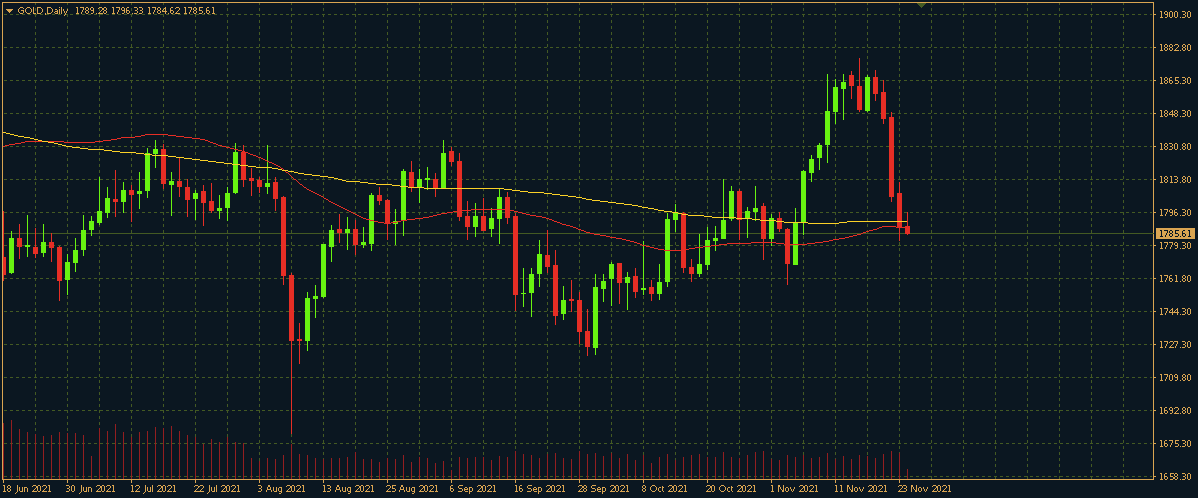
Gold 1793,345
|
EURUSD 1,1214
|
DJIA 35887,50
|
OIL.WTI 78,415
|
DAX 15901,50
|
|---|
Gold has remained under pressure since last trading week. During that time the price of the precious metal has lost more than 4%. In this review we look at the key drivers for the decline and determine how low the XAU/USD could fall.
XAU/USD

The main catalyst for the decline in gold remains the rise in the US dollar. It is well known about the inverse correlation of these assets.
In turn, the US currency is benefiting from expectations that the US Federal Reserve may move to raise interest rates earlier. And this could be as soon as the first half of 2022.
Data from November shows that the recovery of the American economy looks reasonably robust. The labour market is growing and so are retail sales. Inflation, which should be dealt with by tightening monetary policy, is shamelessly breaking all records. This, in turn, is shaping market expectations.
On the other hand, gold, which is in demand as a shelter asset, should seem to react to fears about a new wave of coronavirus in Europe. But, the rising dollar strongly counteracts this, all the while putting pressure on the XAU/USD.
It is worth noting that as early as Thursday, the United States is heading out for an extended weekend. And while Americans will be celebrating Thanksgiving, things might calm down a bit.
Nevertheless, the targets and possible depth of the XAU/USD fall are best determined from a technical analysis perspective.
On the daily chart, a mirror support level can already be seen at the lows of Tuesday’s trading session, near the price of 1780. If it never breaks through with a consolidation below, gold could finally move into a recovery.
If we see a true break-down of the support at 1780, the next levels for the weakening of the XAU/USD will be at 1760 and below, around the September lows at 1716$/oz.
08.00 German GDP for the third quarter
13.30 Publication of ECB meeting minutes
Important Notes on This Publication:
The content of this publication is for general information purposes only. In this context, it is neither an individual investment recommendation or advice nor an offer to purchase or sell securities or other financial products. The content in question and all the information contained therein do not in any way replace individual investor- or investment-oriented advice. No reliable forecast or indication for the future is possible with respect to any presentation or information on the present or past performance of the relevant underlying assets. All information and data presented in this publication are based on reliable sources. However, Bernstein Bank does not guarantee that the information and data contained in this publication is up-to-date, correct and complete. Securities traded on the financial markets are subject to price fluctuations. A contract for difference (CFD) is also a financial instrument with leverage effect. Against this backdrop, CFD trading involves a high risk up to the point of total loss and may not be suitable for all investors. Therefore, make sure that you have fully understood all the correlating risks. If necessary, ask for independent advice.
